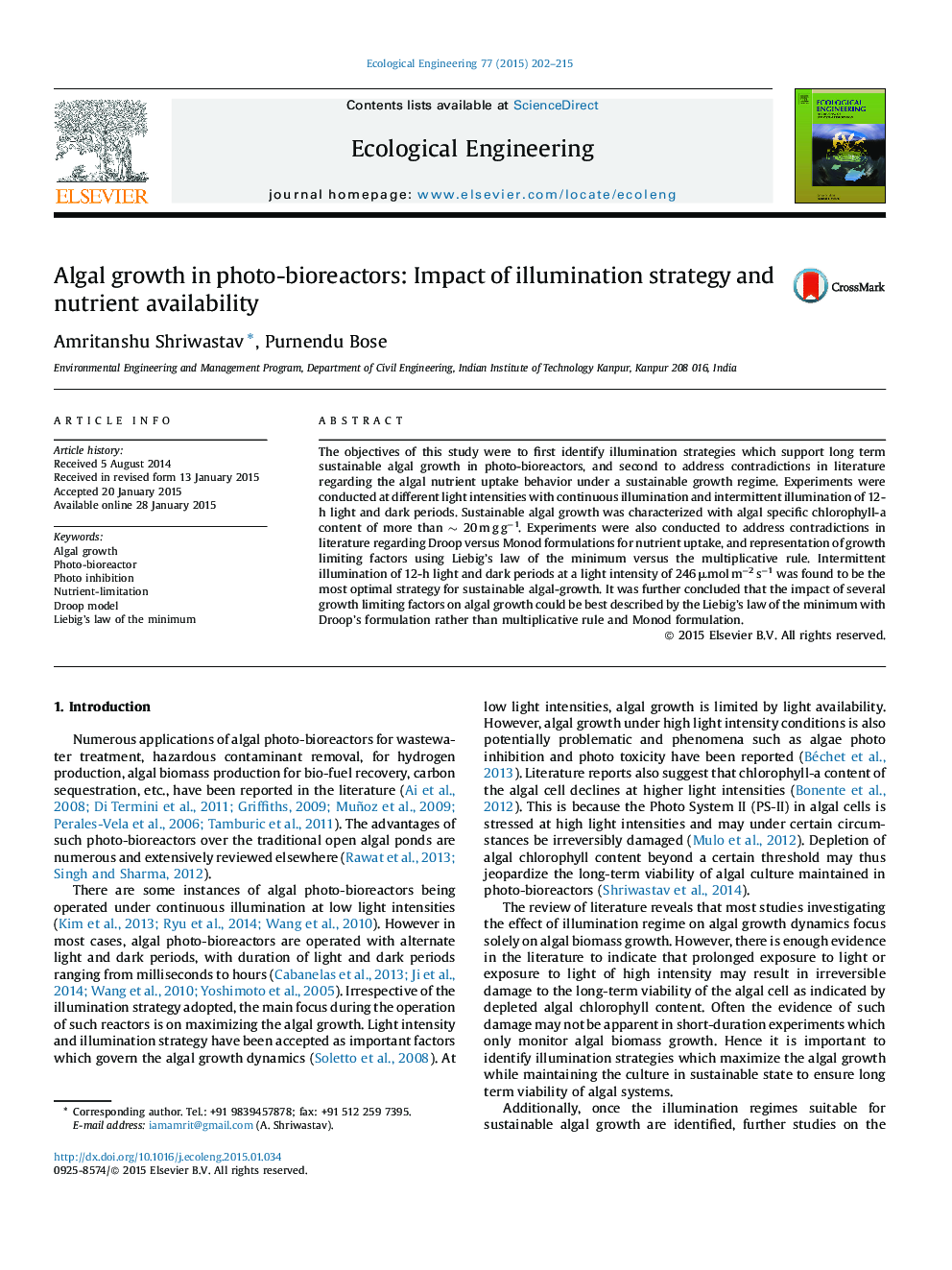| Article ID | Journal | Published Year | Pages | File Type |
|---|---|---|---|---|
| 4389266 | Ecological Engineering | 2015 | 14 Pages |
Abstract
The objectives of this study were to first identify illumination strategies which support long term sustainable algal growth in photo-bioreactors, and second to address contradictions in literature regarding the algal nutrient uptake behavior under a sustainable growth regime. Experiments were conducted at different light intensities with continuous illumination and intermittent illumination of 12-h light and dark periods. Sustainable algal growth was characterized with algal specific chlorophyll-a content of more than â¼ 20 m g gâ1. Experiments were also conducted to address contradictions in literature regarding Droop versus Monod formulations for nutrient uptake, and representation of growth limiting factors using Liebig's law of the minimum versus the multiplicative rule. Intermittent illumination of 12-h light and dark periods at a light intensity of 246 μmol mâ2 sâ1 was found to be the most optimal strategy for sustainable algal-growth. It was further concluded that the impact of several growth limiting factors on algal growth could be best described by the Liebig's law of the minimum with Droop's formulation rather than multiplicative rule and Monod formulation.
Related Topics
Life Sciences
Agricultural and Biological Sciences
Ecology, Evolution, Behavior and Systematics
Authors
Amritanshu Shriwastav, Purnendu Bose,
